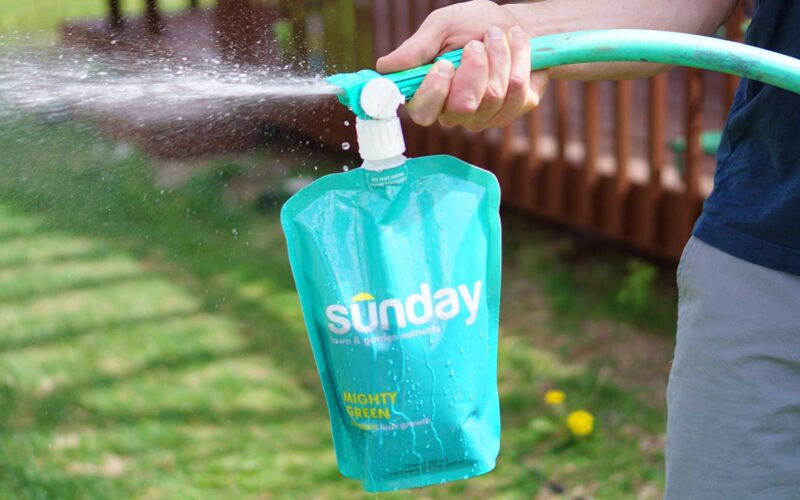Hayden Springer, who came to Bermuda at No. 125 in the FedEx Cup, shot a 6-under 65 for a share of the lead at the Butterfield Bermuda Championship.
5 reasons your lawn is ugly (and how to fix it!), according to a superintendent

Ugly lawn? It doesn’t have to be! Here are 5 of the most common yard problems that plague homeowners — and what you can do about them.
The post 5 reasons your lawn is ugly (and how to fix it!), according to a superintendent appeared first on Golf.
Ugly lawn? It doesn’t have to be! Here are 5 of the most common yard problems that plague homeowners — and what you can do about them.
The post 5 reasons your lawn is ugly (and how to fix it!), according to a superintendent appeared first on Golf.
If you’re like a lot of golfers, now is the time of year when you ask yourself two questions: How did I let my swing get so rusty? And why does my lawn look so bad?
For thoughts on the latter, we turned to Mark Patterson, a longtime member of the Golf Course Superintendents Association of America, and the superintendent at Legacy Golf Club at Lakewood Ranch and Serenoa Golf Club, in Florida.
While long-distance diagnoses can be tricky, Patterson says, some yard-care issues are more prevalent than others. Here are 5 common causes of unsightly springtime turf, and what you can do about them.
1. Over- or under-watering
Superintendents have sophisticated tools to help them dial in irrigation. Homeowners haven’t always had that luxury. “In the old days,” Patterson says, “you pretty much just had to guess.” Not anymore. Nowadays, the market is awash in internet-based irrigation controllers for home use that give readings and responses to crucial factors like soil moisture levels and evapotransporation rates. A lot of this tech is priced in the $150 to $300 range, a relatively small investment can save you money by sparing you the costs of speculation. You’ll be able to determine whether you’re dehydrating your grass or giving it too much to drink.
2. Compaction
On golf courses, soil often gets compacted by heavy foot and cart traffic. On home lawns, Patterson says, compaction is more often caused by cycles of heavy rain and dry spells. Regardless of the cause, though, there are common remedies. You might try amending your soil by adding organic matter. You can also aerate, which, as the term suggests, opens up passageways in compacted soil, allowing air, water and nutrients to move more easily through the root zone.
3. Insects and other invaders
Just because your grass looks dry or discolored doesn’t mean it needs more water. It might be infested by fungus, grubs, worms, wasps. You name it. The list of ailments and invaders goes on and on. No matter the issue, there’s a way to address it. But you don’t want to guess. As with so much else these days, Patterson says, “the internet is your friend.” Surf around and look for imagery and explanations to help identify what you’re up against. You can also snap a photo and show it to an expert at a trusted lawn-care store.
All of our market picks are independently selected and curated by the editorial team. If you buy a linked product, GOLF.COM may earn a fee. Pricing may vary.
Sunday Custom Lawn Care Plans
4. The vagaries of turf varietals
Just the other day, one of Patterson’s Florida neighbors came home with several bags of grass seed for his lawn. Nice idea. Too bad the seed was rye grass, a cool-season varietal that doesn’t stand a chance in Florida’s summer heat. “I told him that he could plant it, but that the grass would be dead in a few weeks,” Patterson said. “But since he’d spent a couple hundred bucks, I also told him he was better off returning it and getting his money back.” Moral of the story: not all grass is created equal, or intended for the same climatic conditions. Make sure you’ve got the right varietal for where you live.
5. Time and cost considerations
There are three ways to do things, Patterson says: good, fast and cheap. “But you can only do two at a time.” Consider how that plays out when you’re trying to decide whether to seed or sod your lawn. Seeding is less expensive, but it takes upward of six weeks for the grass to grow in properly, and you’ve got to pay attention during that time. Sodding is more expensive, but it takes root more quickly. It’s your call. You can get good results with either. What will get you into trouble is when you try to take all three approaches — fast, good, cheap — at once.
The post 5 reasons your lawn is ugly (and how to fix it!), according to a superintendent appeared first on Golf.

